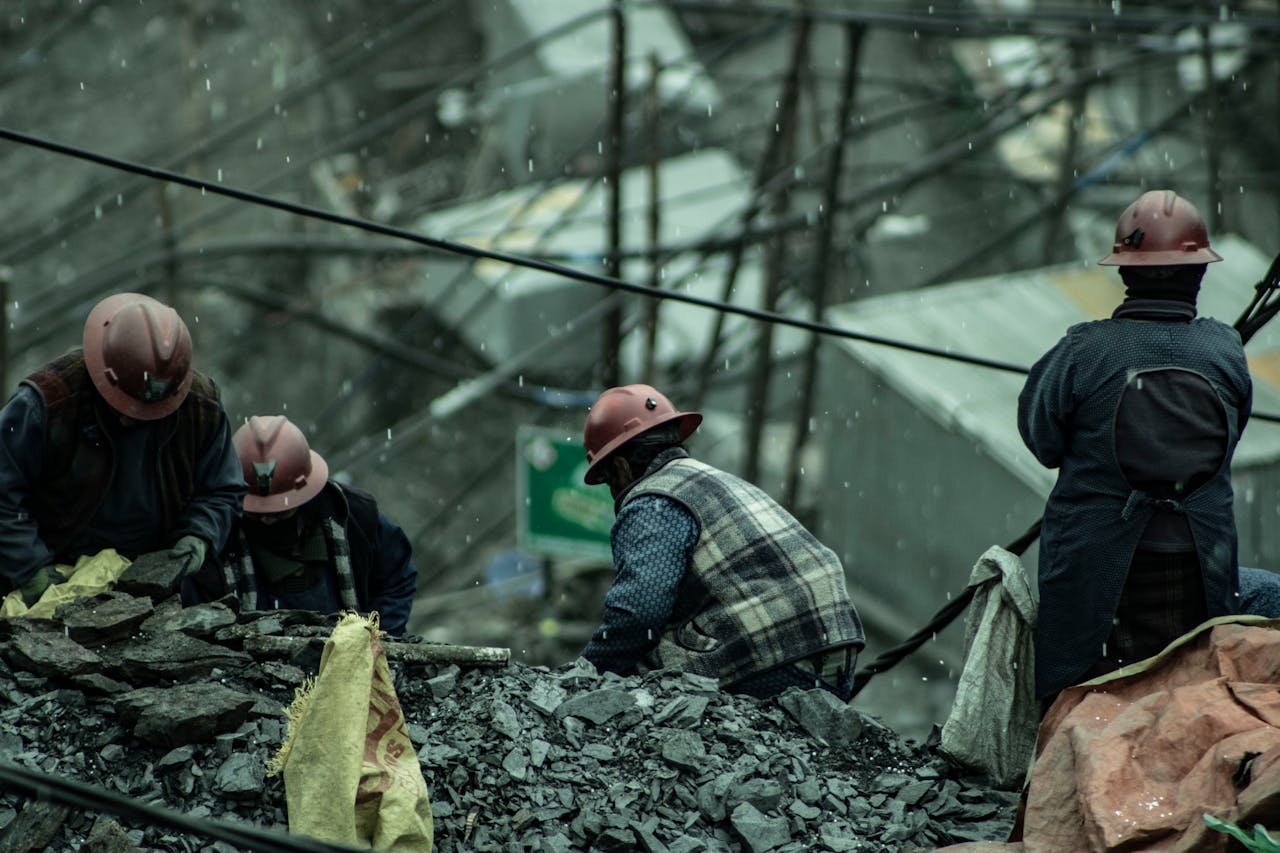Illegal Construction Complaint
Illegal construction is a growing menace in both urban and rural landscapes. From encroachments on public land to unauthorized high-rises that flout zoning regulations, such unlawful developments affect property values, safety, environmental balance, and legal ownership rights. Citizens often feel helpless when they see such construction next door, yet the law provides robust remedies for those willing to act.
In this digital age, online platforms like Nayku are making it easier for individuals to raise complaints and get legal help against illegal construction without lengthy court visits.
This article is a comprehensive guide to understanding what constitutes illegal construction, how to identify it, and how to legally challenge it with the help of appropriate authorities.
Understanding Illegal Construction
Illegal construction refers to any development or building activity that violates:
- Zoning laws
- Building codes
- Environmental norms
- Land use regulations
- Municipality approvals
Common Forms of Illegal Construction:
- Building beyond sanctioned plan
- Constructing on public or government land
- Unauthorized commercial use of residential buildings
- Absence of occupancy certificates
- Violation of setback or height norms
Many residents are unaware that these violations can and should be challenged through proper legal mechanisms. Platforms like Nayku offer easy access to legal advisors who specialize in property disputes and municipal law.

Why Illegal Construction is a Serious Issue?
Illegal constructions aren’t just a violation of law—they cause multiple ripple effects, including:
- Risk to life and property due to unsafe structures
- Traffic congestion due to improper layout or design
- Environmental degradation through forest or wetland encroachments
- Violation of neighbors’ rights such as blocked light, air, or drainage
- Public infrastructure strain
Such construction often proceeds with impunity due to corruption or lack of public awareness. But citizens have the power to take action through legal channels, especially with expert guidance from legal platforms like Nayku.
How to Identify Illegal Construction?
Before filing a complaint, it’s crucial to determine whether a construction is truly illegal.
Steps to Verify:
- Obtain the Building Plan: You can request this from your local municipal office or town planning department.
- Check Zoning Regulations: Ensure the land use complies with municipal zoning.
- Check Building Permission: Look for approvals such as:
- Development Plan (DP)
- Occupancy Certificate (OC)
- Commencement Certificate (CC)
- Check Floor Area Ratio (FAR): If FAR is exceeded, the structure may be illegal.
- Cross-Verify Land Ownership: Encroachments on government or disputed land are common.
Legal experts on Nayku can help verify documents and perform due diligence before initiating a complaint.

Where to File a Complaint for Illegal Construction?
Complaints can be submitted at various levels depending on the jurisdiction and severity:
Authorities You Can Approach:
- Municipal Corporation or Local Development Authority
- Urban Local Bodies (ULBs)
- District Collector
- Police Station (in case of encroachment or land grabbing)
- National Green Tribunal (NGT) – for environmental violations
- Consumer Forums – if you're a flat buyer facing illegal builder actions
- High Court / Civil Court – for injunctions or demolitions
Using platforms like Nayku, you can consult legal advisors who guide you through the appropriate filing process, including drafting complaints or petitions.
Drafting the Complaint
Your complaint must be clear, factual, and supported with documentary proof.
Key Elements to Include:
- Full address of the illegal construction
- Details of the violator (builder/owner)
- Nature of violation (e.g., encroachment, extra floors)
- Attached copies of:
- Photographs
- RTI replies (if obtained)
- Sanctioned vs actual plans
- Property tax receipts
Legal advisors available on Nayku can assist you in preparing an impactful and legally sound complaint to maximize the chances of action.
Filing an RTI for Information
Sometimes, authorities are reluctant to act unless you show solid proof. That’s where Right to Information (RTI) becomes useful.
What You Can Ask Under RTI:
- Approved building plans
- Zoning permissions
- FAR limits
- Builder license details
- Complaints already filed
- Action taken report (ATR)
Nayku’s legal team can assist in drafting effective RTI applications to obtain necessary records from municipal authorities.

Legal Actions and Remedies
If the complaint is ignored or if the construction continues despite objections, you have legal remedies:
1. Public Interest Litigation (PIL)
For large-scale or systemic violations affecting the community.
2. Writ Petition in High Court
To demand demolition or halt construction activity.
3. Criminal Complaint
If the structure threatens life or has caused injuries.
4. Civil Injunction
To stop construction through a court order.
Nayku connects you with property law experts who can file these cases effectively on your behalf, either digitally or via physical representation.
Role of Police and Civic Authorities
The police can take preventive action if illegal construction leads to:
- Breach of peace
- Encroachment on government land
- Threat to public safety
Municipal authorities have the power to:
- Issue stop work notices
- Impose penalties
- Order demolitions
With Nayku’s legal support, you can ensure these powers are exercised without delay through legal pressure.
Rights of Flat Buyers in Illegal Constructions
If you're a flat buyer and later discover the building is partially or fully illegal, you have specific rights:
- Right to refund with interest from the builder
- Right to file a complaint in the Real Estate Regulatory Authority (RERA)
- Right to damages and compensation for false promises
Nayku’s legal consultants guide property buyers on filing complaints under the Real Estate (Regulation and Development) Act, 2016.
Landmark Judgments on Illegal Construction
Some landmark Indian court judgments include:
- Friends Colony Development Committee vs State of Orissa (2004): Supreme Court ruled that unauthorized constructions must be demolished even if occupied.
- M.C. Mehta vs Union of India (1996): Ordered sealing and demolition of unauthorized commercial units in Delhi.
- Dipak Kumar Mukherjee vs Kolkata Municipal Corporation (2012): Established the citizen’s right to file a complaint against illegal construction.
With Nayku’s legal support, complainants can cite such judgments to strengthen their claims.

Delays and Challenges in Complaint Resolution
Filing a complaint doesn't always result in swift action. Common obstacles include:
- Bureaucratic red tape
- Corruption in municipal bodies
- Political influence
- Non-cooperation from law enforcement
Online legal platforms like Nayku provide tools to monitor complaint progress, issue legal notices, and even file contempt proceedings if officials don’t comply.
Environmental and Safety Violations
Illegal construction often causes irreversible damage to:
- Lakes and wetlands
- Reserved forests and green belts
- Coastal regulation zones (CRZ)
You can approach the National Green Tribunal (NGT) or file a PIL to protect such areas. Nayku offers consultation with environmental lawyers who specialize in NGT proceedings.
Anonymous Complaints and Whistleblower Protection
Many fear backlash or retaliation after filing complaints. Some municipalities allow anonymous tip-offs, while legal support platforms help maintain confidentiality.
Through Nayku, whistleblowers can:
- File complaints anonymously
- Get legal protection
- Request relocation of hearings (if safety is a concern)
Preventive Measures – Know Before You Buy
Avoid illegal construction traps by:
- Checking land records online
- Asking for occupancy certificates
- Verifying municipal sanctions
- Getting property vetted by legal experts
Nayku offers affordable pre-purchase legal vetting for land and apartments to protect buyers from scams.
Tech-Enabled Monitoring of Construction
With drones, satellite imagery, and public GIS platforms, it’s easier to identify illegal structures.
Apps like Google Earth and state GIS portals help citizens and authorities verify:
- Unapproved layouts
- Encroachments
- Unauthorized floor additions
Platforms like Nayku are beginning to integrate these tools for better complaint tracking and legal evidence collection.
Conclusion
Illegal construction threatens the rule of law, compromises safety, and damages the environment. But you’re not powerless. With legal awareness, documentation, and expert help, you can take effective action.
From verifying a building’s legality to drafting a PIL or RTI, platforms like Nayku empower citizens with expert legal assistance and real-time support.
Don't let an illegal structure rise next to your home or over your rights—fight it smartly, legally, and digitally.
Related Articles

Find Best Online Lawyers in Bhopal Near Me
Find the best online lawyers in Bhopal near you for instant legal consultation, expert guidance, and...
Read More
Experienced Lawyers Online Legal Consultations In Bhopal
Connect with experienced lawyers in Bhopal for online legal consultations. Get reliable advice and s...
Read More
Get Professional Advice From Best Lawyers in Bhopal
Find top-rated lawyers in Bhopal offering expert legal advice. Get solutions for family, property, b...
Read More
